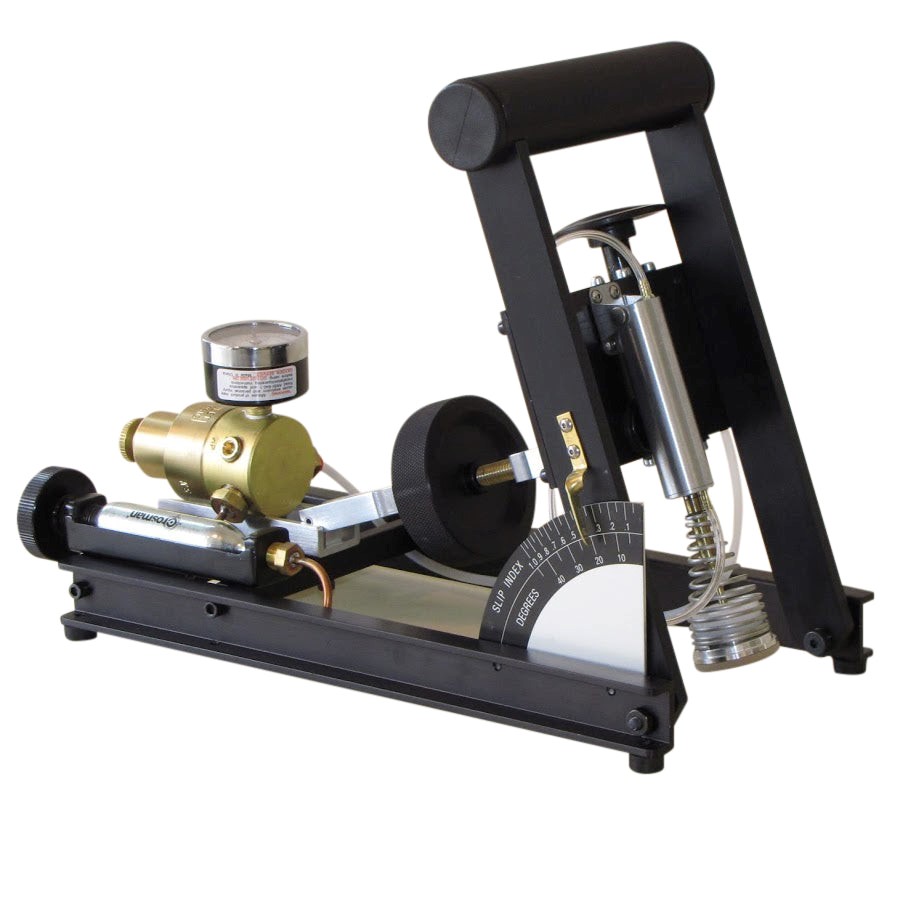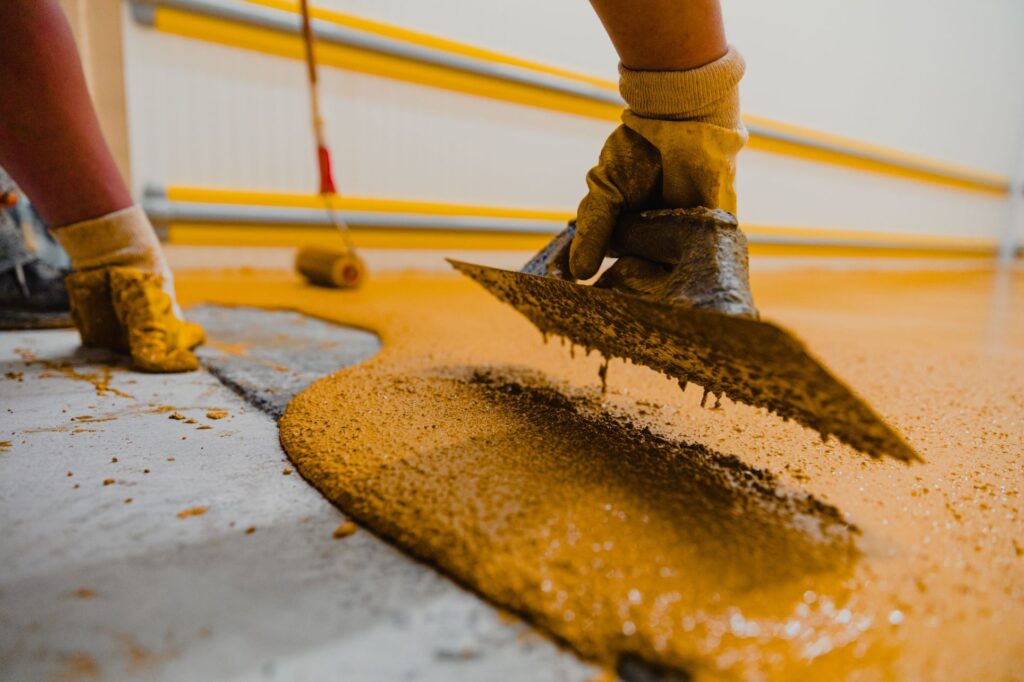Falls were the number one cause of preventable non-fatal injuries and the number two cause of preventable deaths in the US in 2019 (CDC and NEISS data). Slip and falls occur when there is an unexpected loss of traction between a person’s foot and the walking surface. Slip and falls are common and can occur in any setting where people walk, including homes, workplaces, and public areas. Slip and falls can result in serious injuries, particularly for older adults.
The human gait cycle consists of four phases: the stance phase, the toe-off phase, the swing phase, and the heel-strike phase. Slip and falls are most likely to occur when there is an unexpected change in the slip resistance of the walking surface during the heel-strike phase of the gait cycle. The potential for a slip and fall event increases if there is an unexpected reduction in the walkway surface’s slip resistance and the available slip resistance is too low for the pedestrian to remain upright. Some factors that contribute to slips and falls include the type of flooring and the presence of moisture or contaminants on the floor.
The English XL Tribometer is a device used to measure slip resistance on surfaces in an investigation. It measures the coefficient of friction (COF) of a surface by simulating a person walking across it. The lower the slip resistance of the walking surface, the more likely that a pedestrian will slip on the walking surface. An investigator or consultant must be certified to properly use and interpret the results of the English XL Tribometer.

An English XL Tribometer measures the slip resistance of a walkway surface. The device mimics a human heel strike contacting the walkway surface.
Slip and falls commonly occur in restaurant workplaces. For example, a food-preparation worker encountered a greasy section of the floor, slipped, and fell. A Certified XL Tribometrist (CXLT) found the incident section of flooring was contaminated with grease and had a low slip resistance of 0.23, while a clean, uncontaminated section of flooring had a higher slip resistance of 0.89. An analysis determined the cause of the worker’s fall was an improperly cleaned and maintained floor. The chemical solution and method used to clean up grease spills did not adequately remove all contaminants, therefore allowing the grease to build up over time. The grease build-up on the walkway surface decreased the available slip resistance of the floor and caused the worker to slip. The worker lost his balance and fell, resulting in his injuries.
In another incident, two teenagers left the movie theater in the pouring down rain. As they both ran to the car, they encountered a large section of painted concrete and slipped, resulting in serious injuries to both parties. An analysis revealed that the wet painted concrete had a low slip resistance of 0.12 while the reading of the dry painted concrete measured 0.31. A nearby unpainted section of concrete had a very high slip resistance of 0.99 when wet. An analysis revealed that the process of painting the concrete with a gloss paint covered the asperities or “grip” on the concrete walking surface decreased the flooring’s slip resistance. When wet, the painted concrete had an even smaller slip resistance therefore increasing the likelihood of a slip and fall event. The painted concrete was the cause of the teenagers’ slip and falls. Their falls would likely not have occurred had the concrete remained unpainted.

Anti-slip coatings can be applied to walkway surfaces to increase slip resistance. These coatings increase slip resistance by increasing the available traction between the walking surface and the pedestrian’s foot.
Anti-slip coatings can be applied to walkway surfaces to increase slip resistance. These coatings increase slip resistance by increasing the available traction between the walking surface and the pedestrian’s foot.There are effective measures to reduce the likelihood of a slip and fall event. The best way to control slip and fall hazards is to remove the hazard completely. For example, flooring with little slip resistance should be replaced with flooring material with higher slip resistance. If replacing the existing flooring material is not possible, then guarding against or separating pedestrians from inadvertent exposure to the slippery surface is an option. For example, adding non-slip coating such as grit additive increases the slip resistance of the floor. Or placing barriers around a contaminated surface before an employee is able to adequately clean the surface physically prevents a pedestrian from unintentionally encountering the hazard. Lastly, hazard warnings can be used in addition to either removing or guarding a hazard to prevent slip and fall events. Here, owners and management should place conspicuous signs near the hazard to warn pedestrians of the potential slip hazard.
Slip and falls are a common problem that can result in serious injuries and fatalities. They occur when there is a lack of traction between the walking surface and the victim’s footwear. A Certified XL Tribometrist (CXLT) can use a tribometer to measure the slip resistance of walkway surfaces. Effective measures to reduce the likelihood of a slip and fall event include removing or replacing the hazardous walkway surface, guarding against the hazard by increasing the slip resistance of the surface or placing a barrier around the hazard, and placing conspicuous warnings near the hazard.
Ellen Szubski, Ph.D., CXLT, CPSI, AHFP, is a human factors consultant at The Warren Group. She earned a Doctorate of Philosophy in Human Factors Psychology and a Master of Science in Applied Psychology from Clemson University. She did her dissertation on “The Influence of Pedestrian Biological Motion on Time-To-Collision Estimates at Night”. She is also a Certified XL Tribometrist, Certified Playground Safety Inspector and a Certified Associate Human Factors Professional (AHFP). Prior to entering the forensic field, Ellen planned and conducted experiments for a major bicycle manufacturer. She also conducted laser strike perception studies for the Department of Defense. Ellen applies her experience in Human Factors to the analysis of crash investigations and other personal injury matters. These matters often include collisions involving vulnerable road users and drivers, driver distraction, and slips, trips, and falls. She utilizes her knowledge of OSHA regulations, codes, and standards in her analysis of premises liability incidents and safety consulting. Ellen is a current member of the Human Factors and Ergonomics Society (HFES) and it’s Forensic Professional Technical Group.



